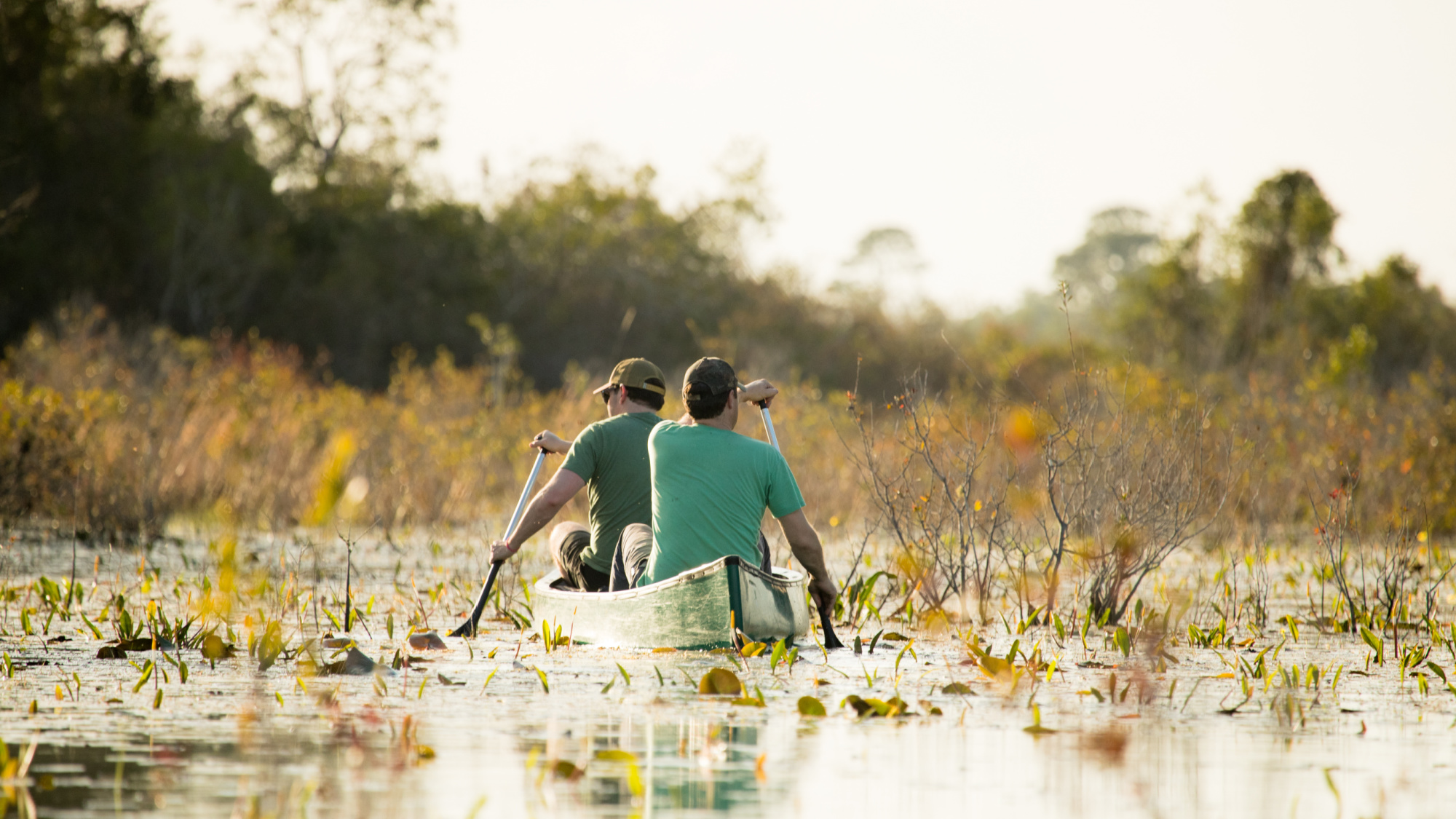Mining company Twin Pines Minerals’ plans to extract titanium dioxide 3 miles from Okefenokee National Wildlife Refuge on the Florida-Georgia state line ran into some federal red tape at the end of January, according to a letter recently acquired by the Associated Press. In it the U.S. Fish and Wildlife Service reminded the Georgia Environmental Protection Division that extracting water from federally reserved lands is prohibited when that water is necessary for the purpose of those lands. In other words, the USFWS considers Okefenokee’s vast expanse of swamp off limits to Twin Pines, who reportedly wants to extract 1.4 million gallons a day from the underlying Floridan aquifer for mining activities.
“Disruption to the natural flow of groundwater in this interconnected system could have far-reaching consequences for both the Refuge and surrounding areas,” USFWS Southeast regional director Mike Oetker wrote in the letter to Georgia EPD. “Any decision regarding the proposed mining permit must be made with consideration of federal reserved water rights.”
When the Georgia EPD conducted its own analysis of the project, which would mine 773 acres of land near the Refuge’s southeastern border along an elevated sand feature called “Trail Ridge,” it concluded the swamp’s water level would be minimally impacted. As a result, the Georgia EPD issued draft permits for the mine on Feb. 9, which initiated a 60-day public comment period.
The FWS letter served as little more than a reminder that the federal government has a reserved right to whatever quantity of water is necessary to maintain the ecological integrity of the Okefenokee, thanks to a Supreme Court decision in the notable Winters vs. U.S. case of 1908. This ruling states that when the U.S. reserves land for a specific use, it also reserves the water rights necessary to support that use. (This decision is often cited in questions of American Indian and Alaska Native water rights on reservation lands and water access on military bases.)

Photograph by Steve Brooks / USFWS
The project (and who should regulate it) has been the subject of much back-and-forth in recent years. When plans for the mine emerged in 2017, the Army Corps of Engineers and the U.S. Environmental Protection Agency had regulatory authority over the project. But a Trump-era rollback of what kinds of waterways received protection under the Clean Water Act changed that authority in 2020, leaving the mine’s permitting process solely in the hands of Georgia EPD, the AP reports.
The Biden administration has since worked to restore the protective powers of the Clean Water Act, and this move from the USFWS is a sign of the feds trying to regain some control over what some experts call a potentially disastrous idea. The Alabama-based company’s representatives swear the mine would have no negative impact on the nation’s largest blackwater swamp and the biggest wildlife refuge east of the Mississippi River.
“The attempts to distort the truth and shut down this project get more desperate as we get closer to a permit,” Twin Pines president Steve Ingle told the AP in December 2022. “We have followed the regulatory process in good faith from the beginning with an abundance of science demonstrating provable methodologies and will continue to do so.”
But the conservation science community in the South feels differently, Outdoor Life contributor Chris Hunt reported in March 2023. Just read this letter 87 scientists penned to Georgia regulators.
Read Next: A Mining Proposal in the Okefenokee Threatens America’s Largest Remaining Blackwater Swamp
“The geographic features underlying the area have been shaped over the past several thousand years by powerful coastal forces,” the letter reads. “Unless a comprehensive study is performed that takes a hard look at the hydrologic functions of this region, it will be impossible to say that the proposed mine, which would be located less than three miles from the Okefenokee, will not jeopardize the Swamp and surrounding areas. There is certainly no agreement that the mine will not be harmful – which should be enough to give pause to any mining permits.”
Titanium dioxide is commonly found in sunscreens, lotions, cosmetics, and hygiene products. The price per metric ton of titanium dioxide pigment has risen since 2018, from $2,710 to $3,400 in 2022. But arguments for the mine’s economic benefits have little sway in communities that rely on the Okefenokee for ample fishing opportunities, groundwater storage, drought resilience, wildlife habitat, and overall ecosystem health.
The Georgia EPD is reviewing the USFWS letter as part of the current public comment period, which ends next month. At that time, Georgia EPD will decide whether to issue finalized permits to Twin Pines. So far, state regulators have stood by their initial analysis.

